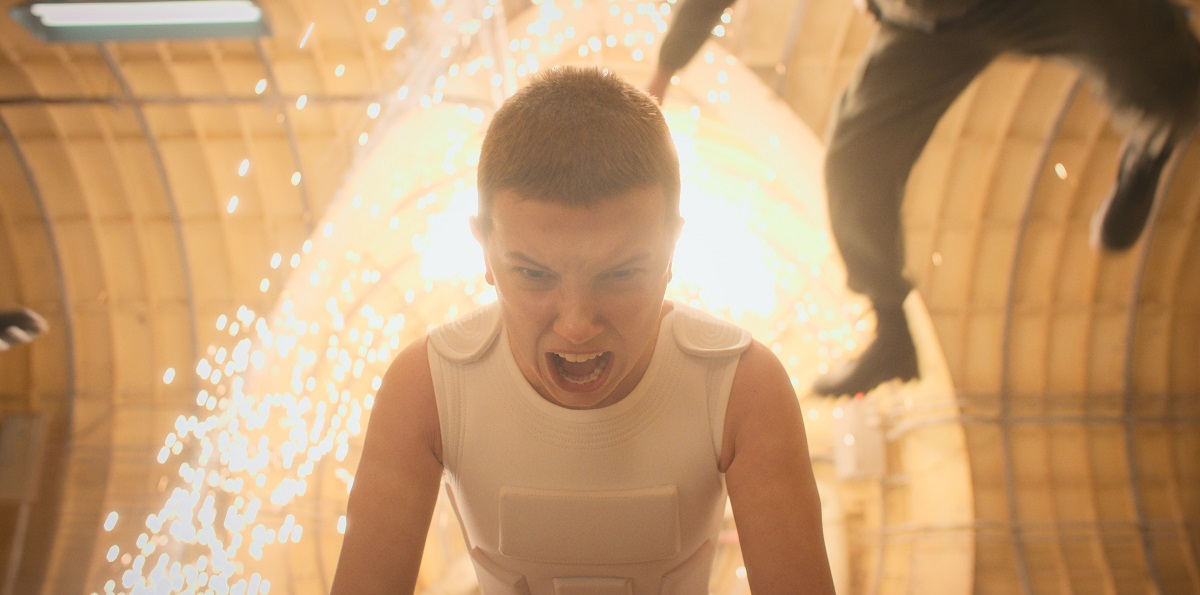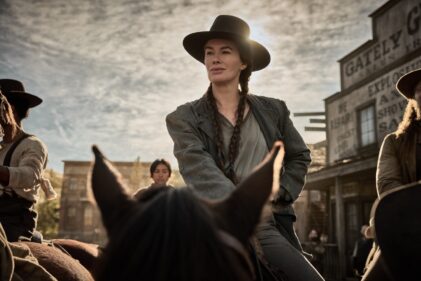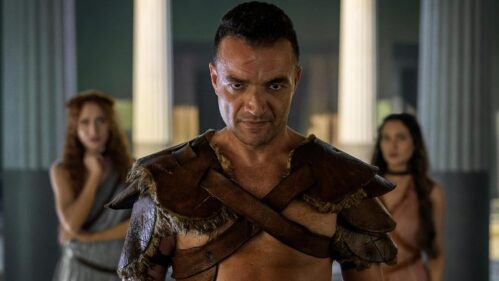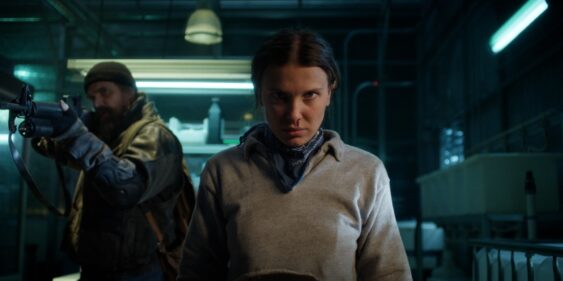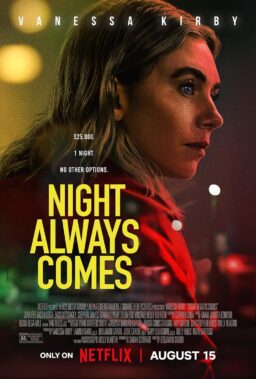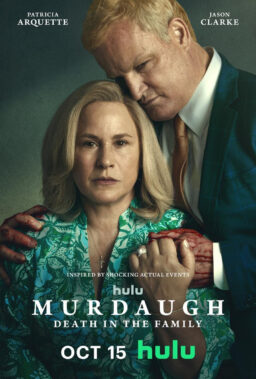“There’s no shame in running. Don’t try to be heroes.”
So says one of the new characters from “Stranger Things 4,” but we know better. El, Mike, Dustin, Lucas, Will, and all the other characters, young and old, have never run from a challenge and have always saved one another in the name of love and friendship, never heroism. Always resourceful, always mindful of what they learned from the past, and always aware of what’s at stake, our heroes keep us coming back and this season has the distinction of merely being the set-up for what’s coming July 1st. What’s here has few clean endings and fewer certainties, which makes it all the more difficult to review it as a finished piece. Many story and character arcs have yet to be truly fulfilled.
Still, we waited a long time for its arrival, so how is it (so far)? “Stranger Things” is still damn good summertime entertainment. The Duffer brothers have done well for themselves in taking their time to make sure they have not just reheated the same meal once more. They still have a passion for this series and that is evident throughout most of the running time. The show is still loaded with smartly placed pop culture references from the era, stand-up-and-cheer moments of showmanship, and emotional crescendos, one of which remains one of the finest sequences in the show’s history and one that I hope will jumpstart a particular artist’s work and become of the signature songs of this coming summer. It’s been in my head all weekend and it’s welcome to live there anytime.
So, of course, I’m duty-bound to not reveal spoilers (I wouldn’t want to), but I can give you the basic set-up. First, you would do well to revisit maybe the last two chapters of “Stranger Things 3,” especially if you haven’t viewed them since they first dropped back in 2019. I did and couldn’t help notice a lovely visual pay-off that introduces Eleven/Jane (Millie Bobby Brown), who now lives with the Byers family—Joyce (Winona Ryder), Jonathan (Charlie Heaton), and Will (Noah Schnapp) in Lenora Hills, CA. Eleven and Mike (Finn Wolfhard) have been penpals since the move and are on the verge of seeing each other again during spring break (1986) when Mike travels to see them. Back in Hawkins, IN, Mike and Dustin (Gaten Matarazzo) have been playing D&D with a group of social outcasts called “Hellfire Club,” run by a new character, the burnout metal head, Eddie Munson (Joseph Quinn).

Meanwhile, Lucas (Caleb McLaughlin) has been slowly separating himself from the likes of Mike, Dustin, and D&D and has started playing basketball for the Hawkins Tigers, stuck between being friends with the jocks and the geeks. In “Stranger Things 3,” we met Robin Buckley (Maya Hawke), who worked at Scoops Ahoy with Steve Harrington (Joe Keery). They remain “just friends” as Harrington pines for Nancy Wheeler (Natalia Dyer), who works for the school paper with her truly ‘80s geek-with-glasses editor, Fred Benson (Logan Riley Bruner). Finally, Max (Sadie Sink) still mourns the death of her brother Billy (Dacre Montgomery) and hasn’t tied herself to any of the social circles while her relationship with Lucas begins to fall apart.
You’re probably wondering, first and foremost, what about Jim Hopper? For that answer, you’ll have to wait until Chapter 2 (although the trailer does have answers, if you want to go that route). That basically sets you up for the first episode, which is all about revisiting old characters and establishing new ones, many of which fill in the ‘80s tropes, including the villainous jock, the oblivious pothead, more Russians and a new monster, clearly modeled after an iconic ‘80s horror figure. There’s a reason we have new characters named “Fred” and “Jason.”
That brings us to one of the show’s strongest elements: the weaving in of a subgenre meant to nod to its influences while finding a voice of its own. The Duffer brothers have smartly moved “Stranger Things” to its next logical ‘80s genre (the slasher film) now that our principals are all teenagers (it was either that or the dumb teen sex comedy). Many horror films get their due here, including “Near Dark,” “The Gate,” and a very obvious “The Silence of the Lambs” nod, while other non-horror films of this era (“The River’s Edge,” “WarGames,” and “Spies Like Us,” to name but a few) also enjoy some fun tributes. The strength of the material, though, will make it certain that the pop culture nods are not the ultimate take-away. While Wes Craven fans will have lots to enjoy here, fans of the show who might be oblivious to this sort of ‘80s fan service will still be on the edge of their seats and fully on board with their favorite characters.

Still, there is an element of patience necessary to one’s enjoyment here. The principal characters have never been this far apart before and we often wait for some reunification. As the season goes forward, we have as many as eight story threads going on at once. That does put a strain on things in the back half, but again, it’s all set-up. Luckily, one of the things the Duffer brothers do well is keeping the momentum going. There have never been any stand-alone flashback episodes or indulgent genre tributes to slow things down, but I can say I have seen enough of one of the show’s less interesting story threads that takes us back to an earlier time. While it does go deeper into one of the central character’s backgrounds, it tends to bog things down, due to the character’s isolation from the action. The breakneck pace and moments of good cheer from “Stranger Things 3” are in shorter supply here.
That is not to suggest that “Stranger Things 4” has lost its sense of humor. Everyone here gets to have a lot of fun (Murray!) and the show still lets itself be a bit silly, even during suspenseful and urgent sequences. The chemistry is still there, even if many of the younger characters appear to be in danger of aging out of these roles (if they haven’t already). The Duffer brothers don’t just have the pop culture stuff down, they also remember the awkwardness and complexities that come with having a first crush or first relationship. Just watch the scene in which Mike and Eleven reunite (it’s early). There is no emotional embrace as the camera spins around them. It’s far more grounded and clear they have a lot to talk about, but don’t yet possess the tools necessary to start the conversation until it’s too late. Wolfhard and Brown still have their hearts in these roles and have a way of reminding us of when they were younger. The writers haven’t turned them into fully mature adults. They’re still learning.
The Duffer brothers also remember the type of cruelty teenagers inflicted (and still inflict) on each other in the name of popularity and entitlement. Anyone who was a picked-on teenager during this time will find that it all checks out. At one point, the show jumps ahead culturally (to the mid-’90s) to remind us of the West Memphis Three and how teenagers who were into metal music and the occult became demonized and scapegoated by their communities. It does remind the viewer that the ugly side of this era is alive and well today, even if that might not be the Duffers’ ultimate goal. The geeks of the show have always been picked on (remember how we first met Steve Harrington?), but this season, the behavior is even more relentlessly cruel throughout, just as they would be in real life.
Anyway, there is still too much to talk about here, but I’ll leave everything for you to discover and debate on your own. “Stranger Things” still delivers and has arrived just in time for a studio that needs a viable hit and a pop culture phenomenon that still feels worthy of discussion.
Seven episodes screened for review. Premieres May 27 on Netflix.

